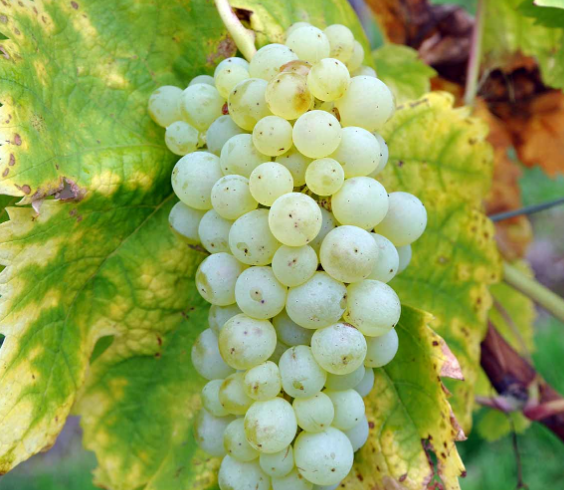OBTAINING BIOLOGICALLY ACTIVE ADDITIVES FROM SECONDARY RAW MATERIAL OF THE WINE INDUSTRY
UDK 66.663.05
Abstract
This study is devoted to the isolation of biologically active substances of phenolic nature from the secondary raw materials of the wine industry, which are natural antioxidants. For the complete isolation of these valuable additives, the composition and yield of grape pomace were determined, which depends on the method of processing grapes, varietal characteristics and quality of pressing, as well as factors affecting it. The object of the study is the isolation of polyphenols from pomace of white and red grape varieties. The grape varieties Bayan-shirey and Madras grown in the conditions of Azerbaijan, as well as the pulp obtained from both varieties, were used as the material for the study. As a result of the study, it turned out that, depending on the technology used, the amount of unfermented "white" and fermented "red" pulp varied in different ways. It turned out that the seeds, skin and pulp have different characteristics in terms of chemical composition. Separate fermentation of pomace obtained from the grape varieties used in the study was carried out, and the average composition was determined. As a result of the analysis, the amount of phenolic compounds and polysaccharides in the studied pulp samples was determined. It was found that depending on the grape variety, the amount of nutrients in the flour obtained from the pulp varies widely. In the obtained extracts, the amount of biologically active substances (BAS) of phenolic nature was determined. The results of the analysis showed that reducing the amount of extractant in the water module to a certain extent increases the extraction of phenolic compounds. In this regard, the module 1 : 5 and 1 : 3 was the most optimal. It turned out that the extracts have a high antioxidant activity and, depending on the type of raw material, this indicator ranges from 1272.3 to 2545.3. The resulting additive can be used in the production of functional products.
Downloads
Metrics
References
Balanov P.Ye., Smotrayeva I.V., Ivanchenko O.B. Vestnik Tekhnologicheskogo Universiteta, 2016, vol. 19, no. 1, pp. 131–134. (in Russ.).
Perez-Vizcaino F., Fraga C.G. Archives of Biochemistry and Biophysics, 2018, vol. 646, pp. 107–112.
Gerasimov M.A. Ispol'zovaniye otkhodov vinodeliya. Tekhnologiya vina. [Use of winemaking waste. Wine technolo-gy]. Rostov, 2003, 183 p. (in Russ.).
Bayramov E., Aliyev S., Gasimova A., Gurbanova S., Kazimova I. Eastern-European Journal of Enterprise Technol-ogies, 2022, vol. 2 (11 (116)), pp. 58–68. DOI: 10.15587/1729-4061.2022.254090.
Nabiyev A.A. Khimiya vina. Uchebnik. [The chemistry of wine. Textbook]. Baku, 2010, 472 p. (in Azer.).
Fataliyev Kh.K. Tekhnologiya vina. Uchebnik. [Wine technology. Textbook]. Baku, 2011, 596 p. (in Azer.).
Akın A., Altındişli A. Akademik Gida, 2010, vol. 8(6), pp. 19–23.
Morajkar P., Naik M. Advances in Nano and Biochemistry. Elsevier Science, 2023, 598 p.
Gorlach S., Fichna J, Lewandowska U. Cancer Letters, 2015, vol. 366, no. 2, pp. 141–149.
Özvural E.B., Vural H. Türkiye 10. Gida kongresi. Erzurum, 2008, pp. 583–586.
Kornen N.N., Pershakova T.V., Shakhray T.A. Politematicheskiy setovoy elektronnoy nauchnyy zhurnal KubGTU, 2016, no. 121, pp. 1037–1053. (in Russ.).
Nabiyev A.A., Gasanova N.R., Tagiyev M.M., Abadov M.K., Akhmedova M.I. Teoreticheskiye osnovy pishchevoy tekhnologii. [Theoretical basis of food technology]. Baku, 2008, 248 p. (in Azer.).
Myers P. Chromatographia, 2011, vol. 73, 1241.
Metody tekhnokhimicheskogo kontrolya [Technochemical control methods], ed. V.G.Gerzhikova. Simferopol', 2009, 304 p. (in Russ.).
Novikov N.N., Tarazanova T.V. Laboratornyy praktikum po biokhimii rasteniy: uchebnoye posobiye. [Laboratory workshop on plant biochemistry: textbook]. Moscow, 2012, 97 p. (in Russ.).
Aksenova A.V. Nauchnyye trudy GNU SKZNIISiV, 2018, vol. 4, pp. 145–148. (in Russ.).
Baghirzade A., Omarov Y., Haciyeva A., Gurbanova S., Gasimova A., Ismayilov M., Nabiyev A. Eastern-European Journal of Enterprise Technologies, 2023, vol. 2 (11 (122)), pp. 49–62. DOI: 10.15587/1729-4061.2023.276251.
Cabaroğlu T. Gida dergisi, 2003, vol. 28, pp. 599–605.
Bykova T.O., Makarova N.V., Shevchenko A.F. Materialy III Mezhdunarodnoy nauchnoy konferentsii «Kachestvo i ekologicheskaya bezopasnost' pishchevykh produktov i proizvodstv». [Materials of the III International Scientific Conference “Quality and environmental safety of food products and production”]. Tver, 2015, pp. 123–127. (in Russ.).

Copyright (c) 2024 chemistry of plant raw material

This work is licensed under a Creative Commons Attribution 4.0 International License.

This work is licensed under a Creative Commons Attribution 4.0 International License.
The authors, which are published in this journal, agree to the following conditions:
1. Authors retain the copyright to the work and transfer to the journal the right of the first publication along with the work, at the same time licensing it under the terms of the Creative Commons Attribution License, which allows others to distribute this work with the obligatory indication of the authorship of this work and a link to the original publication in this journal .
2. The authors retain the right to enter into separate, additional contractual agreements for the non-exclusive distribution of the version of the work published by this journal (for example, to place it in the university depository or to publish it in a book), with reference to the original publication in this journal.
3. Authors are allowed to post their work on the Internet (for example, in a university repository or on their personal website) before and during the review process of this journal, as this may lead to a productive discussion, as well as more links to this published work.











